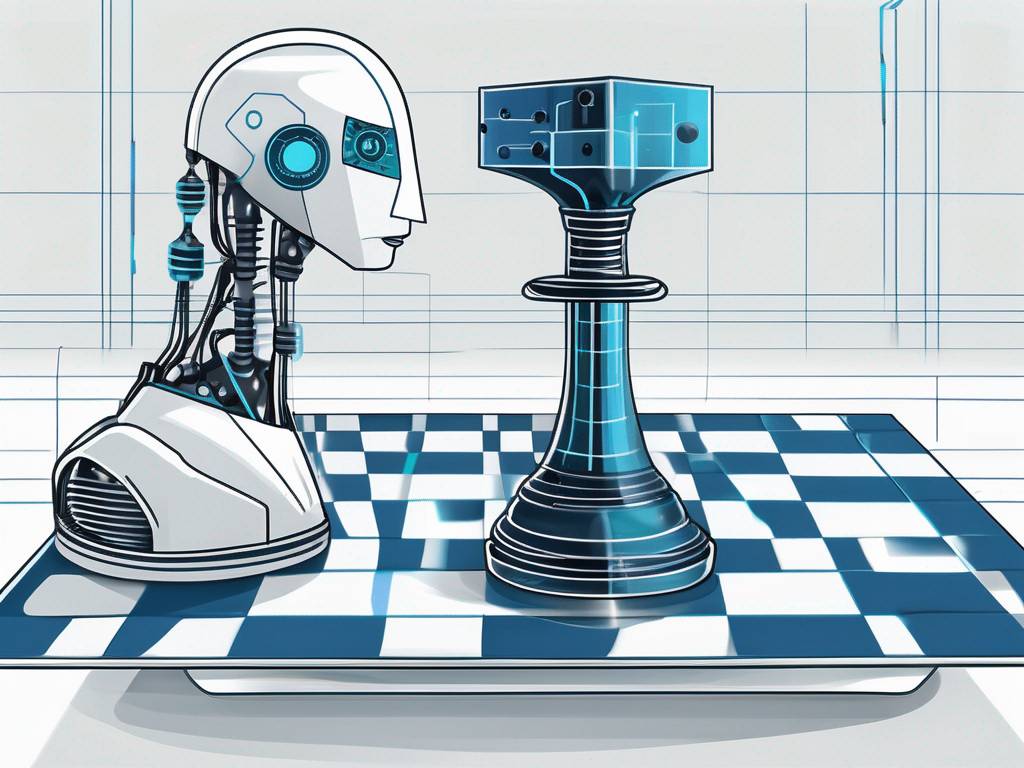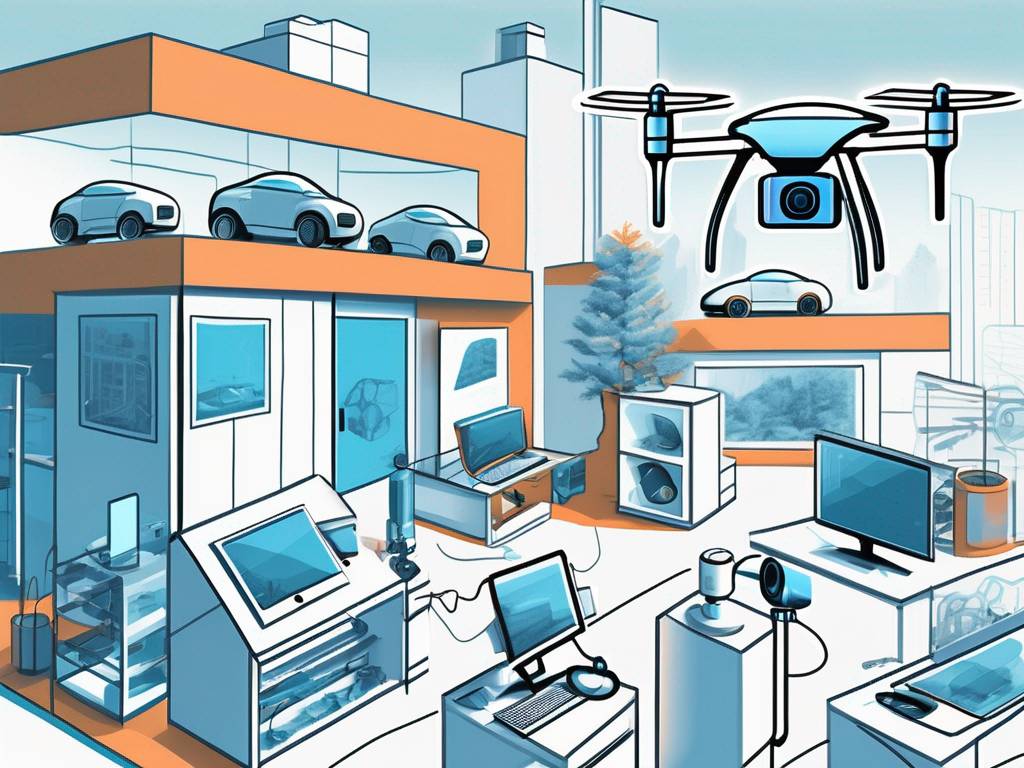Narrow vs. General AI: How Are They Different?
Artificial Intelligence (AI) has rapidly gained prominence in recent years, and its potential impact on various industries and the human race cannot be understated. As AI technology advances, it’s important to understand the different types of AI and their implications. This article will explore the distinctions between Narrow AI and General AI, two key classifications of AI systems.
Understanding Artificial Intelligence
The Concept of Artificial Intelligence
Artificial intelligence refers to the development of intelligent machines capable of performing tasks that typically require human intelligence. These tasks include speech recognition, decision-making, problem-solving, and learning. Artificial intelligence systems have become an integral part of our lives, impacting various industries such as healthcare, finance, transportation, and entertainment.
The Evolution of AI Technology
The concept of AI dates back to the 1950s when researchers began envisioning machines that could think and perform tasks like humans. The early days of AI were characterized by rule-based systems, where machines followed predefined instructions to solve specific problems. However, these systems had limited capabilities and struggled to handle complex tasks.
As technology advanced, AI evolved from rule-based systems to more sophisticated approaches such as machine learning, deep learning, and neural networks. Machine learning algorithms enable computers to learn from data and enhance their performance over time. Deep learning involves training artificial neural networks with multiple layers to identify patterns and make predictions. These advancements have significantly improved image recognition, natural language processing, and speech synthesis.
These advancements have paved the way for the development of Narrow AI. Narrow AI, also known as weak AI or Artificial Narrow Intelligence, refers to AI systems that are designed to perform specific tasks within a limited domain. Examples of Narrow AI include virtual assistants like Siri and Alexa, recommendation systems, and autonomous vehicles.
On the other hand, General AI, also known as strong AI or Artificial General Intelligence, refers to AI systems envisioned to understand, learn, and apply knowledge across a wide range of tasks and domains. General AI aims to replicate human-level intelligence and remains a topic of ongoing research and development.
With rapid advancements in AI technology, there are ongoing discussions and debates about its potential societal impact. Concerns include job displacement and economic inequality, while others see opportunities for creating new jobs and enhancing human capabilities. As AI evolves, ensuring transparency and responsible use of this technology is essential.
Defining Narrow AI
Narrow AI refers to AI systems designed to perform specific tasks with high proficiency within a limited domain. This type of AI cannot perform tasks beyond its predefined parameters.
Narrow AI, with its domain-specific focus, is a powerful tool in various industries. Its specialization in processing and analyzing vast amounts of data within a specific domain enables it to provide highly accurate and contextually relevant insights, making it invaluable for numerous applications.
For example, in the healthcare industry, Narrow AI has been instrumental in facilitating accurate disease diagnosis and personalized treatment recommendations. By analyzing medical records, symptoms, and genetic data, AI algorithms can identify patterns and make predictions that aid healthcare professionals in making informed decisions. This not only improves patient outcomes but also helps to optimize healthcare resources.
Similarly, Narrow AI algorithms have revolutionized various processes within the financial sector. For example, fraud detection, has become more efficient and effective through the implementation of AI systems. These algorithms can analyze large volumes of financial data in real-time, identifying patterns and anomalies that may indicate fraudulent activity. By automating this process, financial institutions can detect and prevent fraud more quickly, protecting themselves and their customers.
Additionally, Narrow AI has significantly impacted algorithmic trading and credit risk assessment. AI-powered trading systems can analyze market data, news, and other relevant information to make informed investment decisions. This increases the speed and accuracy of trading and reduces human bias and emotions that can often lead to suboptimal outcomes. Similarly, credit risk assessment has been enhanced by AI algorithms that can analyze credit histories, financial statements, and other relevant data to determine the creditworthiness of individuals and businesses.
Narrow AI has also revolutionized the transportation industry. Self-driving cars rely on AI systems to perceive and interpret their surroundings, making real-time decisions to navigate safely and efficiently. These AI-powered vehicles have the potential to reduce accidents, increase road capacity, and improve overall transportation efficiency. Additionally, Narrow AI has been used to optimize traffic flow through intelligent systems that can analyze real-time data and adjust traffic signals accordingly, reducing congestion and improving travel times.
From healthcare to finance to transportation, AI algorithms have revolutionized processes, improved decision-making, and enhanced overall efficiency. As technology advances, the potential for Narrow AI to further transform industries and improve lives is immense.
Exploring General AI
In contrast to Narrow AI, General AI aims to replicate the full range of human cognitive capabilities, exhibiting flexibility and adaptability across different domains. General AI systems may be able to autonomously learn, reason, and apply knowledge to various tasks, mirroring human intelligence. While General AI does not currently exist, achieving it presents numerous technical and ethical challenges.
Features of General AI
Envision a machine with the capability to comprehend and respond to human language just as fluently and intelligently as a human being. Such a machine could engage in meaningful conversations, grasp intricate concepts, and provide insightful responses. This extraordinary level of language understanding is at the core of General AI and has the potential to unlock numerous opportunities, from advanced virtual assistants to language translation services that seamlessly bridge communication gaps among individuals from diverse cultures and languages.
The defining characteristic of General Artificial Intelligence is its theoretical potential to excel in multiple intellectual tasks, covering a broad spectrum of cognitive abilities. General AI systems are envisioned to have the capacity to comprehend natural language, acquire new skills through learning, and adapt to novel situations. These systems are hoped to go beyond their initial programming and exhibit remarkable versatility, enabling autonomous decision-making.
Artificial General Intelligence systems could also theoretically possess the ability to showcase creativity. They might have the capability to generate original ideas, compose music, create artwork, and even author novels. While generative AI also has this ability, the vision for Artificial Generative Intelligence is to create art using methods similar to human creativity.
Potential Uses of General AI
General Artificial Intelligence could have transformative effects across various fields if successfully developed. In healthcare, General AI has the potential to revolutionize medical diagnosis and treatment. Working alongside human professionals, General AI could offer accurate diagnoses faster than human doctors by utilizing extensive medical knowledge and insights into individual genetic blueprints. This technology could enable the creation of personalized treatment plans that extend human lifespans and significantly improve quality of life
In the realm of scientific research, General AI could autonomously conduct experiments and make predictions, potentially leading to groundbreaking discoveries. This capacity might advance disciplines such as physics, chemistry, and biology, unlocking new knowledge and pushing human understanding further.
Imagine cities where General AI systems manage urban infrastructures, predicting and responding to the ebb and flow of human activity with precision, ensuring energy efficiency, optimizing traffic, and enhancing public safety in real-time. These AI systems could orchestrate a symphony of autonomous vehicles and drones, ensuring seamless and environmentally friendly transportation of people and goods.
The potential applications of General AI are vast and varied. From transforming healthcare to revolutionizing research and development, General AI has the power to reshape our world. However, with great power comes great responsibility. The ethical implications of General AI must be carefully considered, as well as the potential risks and challenges of creating machines that could surpass human intelligence.
Key Differences Between Narrow AI & General AI
Functionality & Scope
The most critical distinction between Narrow AI and General AI lies in their functionality and scope. While Narrow AI excels in performing specific tasks, General AI aims to mimic the breadth and versatility of human intelligence, with capabilities that can be applied to diverse domains. Narrow AI systems are designed to optimize efficiency and accuracy within their designated domain, while General AI seeks to possess a holistic understanding of various domains.
For example, a Narrow AI system designed for facial recognition is trained specifically to identify and recognize faces, making it highly accurate and efficient in that particular task. However, it lacks the ability to perform tasks beyond facial recognition, such as language translation or problem-solving in different domains.
In contrast, a General AI could not only recognize faces but also understand natural language, solve complex problems, and even exhibit creativity. General AI systems strive to possess a level of versatility and adaptability similar to human intelligence.
Learning & Adaptability
Narrow AI systems are typically trained on specific datasets and algorithms, allowing them to perform their designated tasks with high precision. Despite their proficiency, Narrow AI cannot generalize from one task to another. In contrast, when perfected, General AI is envisioned to self-learn and adapt to new scenarios. General AI systems could acquire knowledge and reason, and apply it to novel situations, enabling them to autonomously learn and perform tasks beyond their initial programming.
For instance, imagine a Narrow AI system that is trained to play chess. It can analyze different chess positions and make optimal moves based on its training. However, if you ask the same system to play a different game, such as Scrabble, it would struggle to adapt because it cannot generalize its knowledge from chess to other games.
On the other hand, General AI systems may possess the capability to learn from various sources, including experience, observation, and interaction with the environment. These systems could reason, understand context, and apply their knowledge to solve problems in different domains. They have the potential to continuously learn and improve their performance over time, making them highly adaptable and versatile.
Complexity & Processing Power
Another distinction is the complexity and processing power required for Narrow AI vs. General AI systems. Narrow AI systems are built to specialize and perform specific tasks, often requiring less computational power and resources. These systems are designed to optimize efficiency within their narrow domain, focusing on solving a particular problem.
On the other hand, future General AI systems will demand significantly more advanced computational infrastructure and complex algorithms to replicate the breadth of human intelligence and process vast amounts of data. These systems will be expected to handle a wide range of tasks, understand natural language, reason, and learn from various sources. Achieving such capabilities will require substantial computational power, sophisticated algorithms, and access to extensive datasets. Currently, these capabilities are theoretical and not yet realized, but with further advancements, they could become possible.
General AI systems are anticipated to rely on advanced technologies like deep learning, neural networks, and high-performance computing to simulate human-like intelligence. The complexity and processing power required for General AI presents significant challenges for development and implementation at scale.
The Future of AI: Narrow & General
Predicted Developments in Narrow AI
The field of Narrow AI is expected to witness rapid advancements in the coming years. As technology continues to evolve, Narrow AI systems are projected to become increasingly sophisticated, capable of processing and analyzing larger datasets with greater accuracy. The integration of Narrow AI into various industries will drive automation, improving efficiency and decision-making processes.
Anticipated Advancements in General AI
Developing Artificial General Intelligence remains an ongoing challenge, and estimations for its realization vary. However, research and breakthroughs in deep learning and reinforcement learning hold promise for the gradual development of advanced General AI systems. As computational power and algorithms continue to progress, the boundaries of General AI may expand, enabling significant advancements in various domains.
Narrow AI and General AI represent distinctive approaches to artificial intelligence. While Narrow AI specializes in performing specific tasks with high proficiency within a predefined domain, General AI aims to replicate the breadth of human intelligence, exhibiting adaptability and versatility across multiple domains. Right now, only Narrow AI exists, but we might see different advancements on a general level in the future. Understanding the key differences between these classifications of AI is crucial in navigating the future of AI, where both Narrow AI and General AI are poised to revolutionize industries and transform our way of life.
Questions?
-
What is the primary distinction between Narrow AI and General AI?Toggle questionNarrow AI, or Weak AI, is designed for specific tasks and excels within defined parameters. General AI, or Strong AI, is envisioned to have the ability to understand, learn, and apply knowledge across a broad spectrum of tasks, similar to human intelligence.
-
What are examples of Narrow AI and General AI capabilities?Toggle questionNarrow AI examples include virtual assistants, image recognition technology, and recommendation systems. General AI, still theoretical, would perform any intellectual task a human can, demonstrating reasoning, problem-solving, and learning across diverse domains.
-
Are there limitations to Narrow AI that General AI aims to overcome?Toggle questionYes, Narrow AI is limited to predefined tasks and lacks adaptability. General AI aims to overcome these limitations by exhibiting a versatile understanding of various tasks and the ability to learn and apply knowledge across different domains.
-
What are the ethical considerations associated with the development of General AI?Toggle questionEthical considerations include concerns about autonomy, accountability, and the potential for misuse. Developers must address issues like bias, transparency, and the impact of AI on employment and societal structures.
-
Are there any real-world examples of General AI?Toggle questionAs of now, General AI remains theoretical. Current AI systems, even those demonstrating impressive capabilities, are still limited to specific tasks and lack the broad understanding envisioned of General AI.
-
How does the development of Narrow AI technologies contribute to advancements in AI research?Toggle questionNarrow AI technologies serve as building blocks for AI research. Progress in specific applications contributes to a deeper understanding of AI principles, laying the groundwork for potential advancements toward General AI.
-
How can businesses leverage Narrow AI while keeping an eye on future developments in General AI?Toggle questionBusinesses can benefit from Narrow AI applications for specific tasks, enhancing efficiency and productivity. Staying informed about General AI developments ensures preparedness for potential transformative shifts in the AI landscape.

 hello@westlink.com
hello@westlink.com  (866) 954-6533
(866) 954-6533  700 N Colorado Blvd,
700 N Colorado Blvd,







Comments